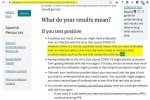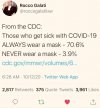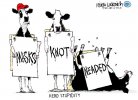France set a record for Covid-19 infections this weekend, and Italy has announced new restrictions, such as closing bars and restaurants at 6 p.m. The feared fall coronavirus surge has arrived in Europe and also in the U.S., where cases continue to rise. It’s time to consider a limited and temporary national mask mandate.
Consider hospitalizations, which reached 42,000 on Saturday, up from 30,000 a month ago. This increase comes even as hospital admission criteria have become more stringent, with more patients managed at home. It’s true that more testing reveals more cases. But most tests are done because people have Covid symptoms or come into contact with someone who is sick. Total hospitalizations, which are on pace to eclipse totals from the spring, are an objective measure of a rampant epidemic.
As deaths rise this winter, policy makers will have to take new steps to slow the rate of spread. There is no support for reprising this spring’s stay-at-home orders. It will be essential to use standard interventions, including limits on crowded settings such as bars and continuing to test and trace contacts. But on the current trajectory these measures won’t be enough to keep hospitals from being overwhelmed in some areas.
Masks would help. As a practical matter, it’s easier to wear a mask in the winter than the summer. A mandate can be expressly limited to the next two months. The inconvenience would allow the country to preserve health-care capacity and keep more schools and businesses open. Studies show widespread use of masks can reduce spread. But even if masks are only incrementally helpful, they are among the least economically costly and burdensome options for reducing spread.
It’s long been known that masks can reduce the spread of flu, and the same logic applies to the coronavirus. People are most contagious before showing symptoms, and many never develop symptoms at all. Data show that masks can trap many droplets that carry infectious particles. Everyone wearing a mask in public would help reduce asymptomatic spread.









